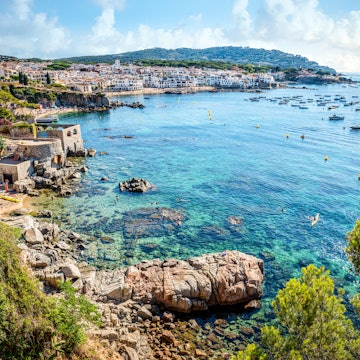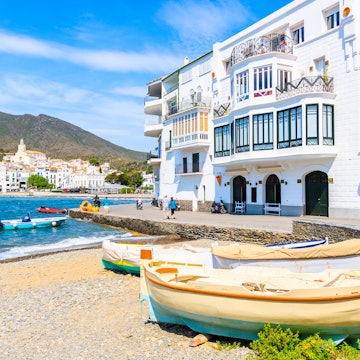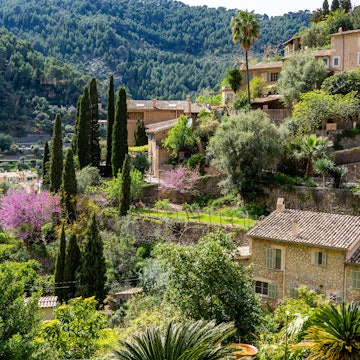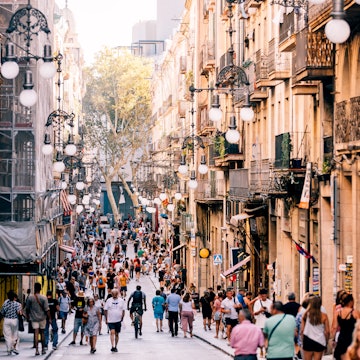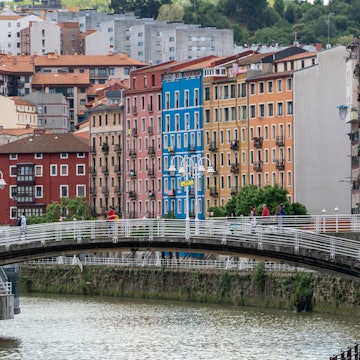

Calella de Palafrugell on the Costa Brava, Spain. Eloi_Omella/Getty Images
There is nothing like summer on the Costa Brava. Small beach-lined villages are buzzing with life as sunbathers lie out on golden sands and hikers seek out far-flung coves along the coast-hugging Camí de Ronda. North of Barcelona, the Catalan coast stretches from Blanes all the way up to the French border near Portbou, and is filled with dozens of charming destinations tucked between the pine forests that top the clifftops.
A trip to the Costa Brava could be a quick weekend getaway to escape the dense summer heat in Barcelona, or it could be a week-long (or longer) adventure spent exploring new seaside towns and swimming on every beach and cala (cove). Here’s how to plan your summer getaway on the Costa Brava.
Step 1: Choose which towns to visit
Stretching for over 160km (100 miles), the Costa Brava has many beautiful beach towns where you could spend your trip. There are long sandy beaches that cater to families, but there are also clusters of tiny villages, which tend to be more lively and adjacent to rocky trails leading to hidden swimming coves.

Tossa de Mar
Best for romance
Vibes: With its turreted old town perched right on the water, Tossa de Mar is one of the most romantic landscapes you’ll find on the Costa Brava, which also means you’ll see a lot of photo-snapping day trippers.
Do: Admire the 13th-century walls on your way up into the Vila Vella. There are shops and a small museum, but you will also have the best views of the beaches on both sides.
Eat: For upscale Catalan and sophisticated seafood, La Cuina de Can Simón is a highly coveted table located in a centuries-old fisher’s house.
Stay: The Hotel Diana is a dreamy beachfront boutique hotel that also boasts a rooftop pool, but budget travelers will also find a friendly scene and central location at Mana Mana Youth Hostel.

Llafranc
Best for village hopping
Vibes: Part of the cluster of fishing villages near Palaufrugell, Llafranc is one of the smaller towns and beaches, but it makes up for its size with plenty of style, and it tends to be more laid-back than its neighbor Calella de Palaufrugell.
Do: Visit the botanical gardens of Cap Roig or walk up to the Faro de Sant Sebastià, a 19th-century lighthouse. From here, you can join up with the Camí de Ronda trail and follow it 10km (6 miles) to the next village of Tamariu.
Eat: In the sleek dining room of Marmara, or out on the terrace, expect delectable and pleasantly surprising tapas like the salmon ceviche or oxtail bao buns.
Stay: Decorated in vintage travel memorabilia, Hostal Sa Teula is a midrange hotel with bohemian vibes and an ample breakfast spread, walking distance from the beach.

Begur
Best for the beautiful beaches
Vibes: This mountaintop city can be your base for exploring some of the beautiful beaches on the Costa Brava, like Platja de Sa Riera or Sa Tuna.
Do: The beaches here tend to be some of the busiest on the Costa Brava, so take advantage of the walking path to find more space on harder-to-reach coves like Platja de l’Illa Roja.
Eat: In Begur town, discover the surprising connection between Cuba and Catalonia while sipping on a mojito at Havana.
Stay: Overlooking one of the most celebrated beaches in the region, the Parador de Aiguablava is a cliff-top resort surrounded by pines worthy of a special occasion. For a stay closer to town, the Hotel Rosa is a more affordable choice with traditional but spacious rooms and a lovely terrace.

L’Escala
Best for ancient history
Vibes: With lively family-friendly beaches and wild trails that lead to hidden calas along the coast, you can be a little bit of a beach bum and a little bit of an adventurer in this more laid-back coastal town.
Do: Visit the oldest Greek settlement on the Iberian peninsula at Empúries, where the archaeology museum also has many wonderfully preserved mosaics from the Roman era.
Eat: If you have a car, drive 10 minutes to the historic farmhouse of Mas Concas, where the cuisine is a fusion of French techniques and Catalan ingredients.
Stay: Yurts, bell tents and bungalows are available WeCamp Cala Montgó, which has relatively new facilities and a wide variety of amenities.
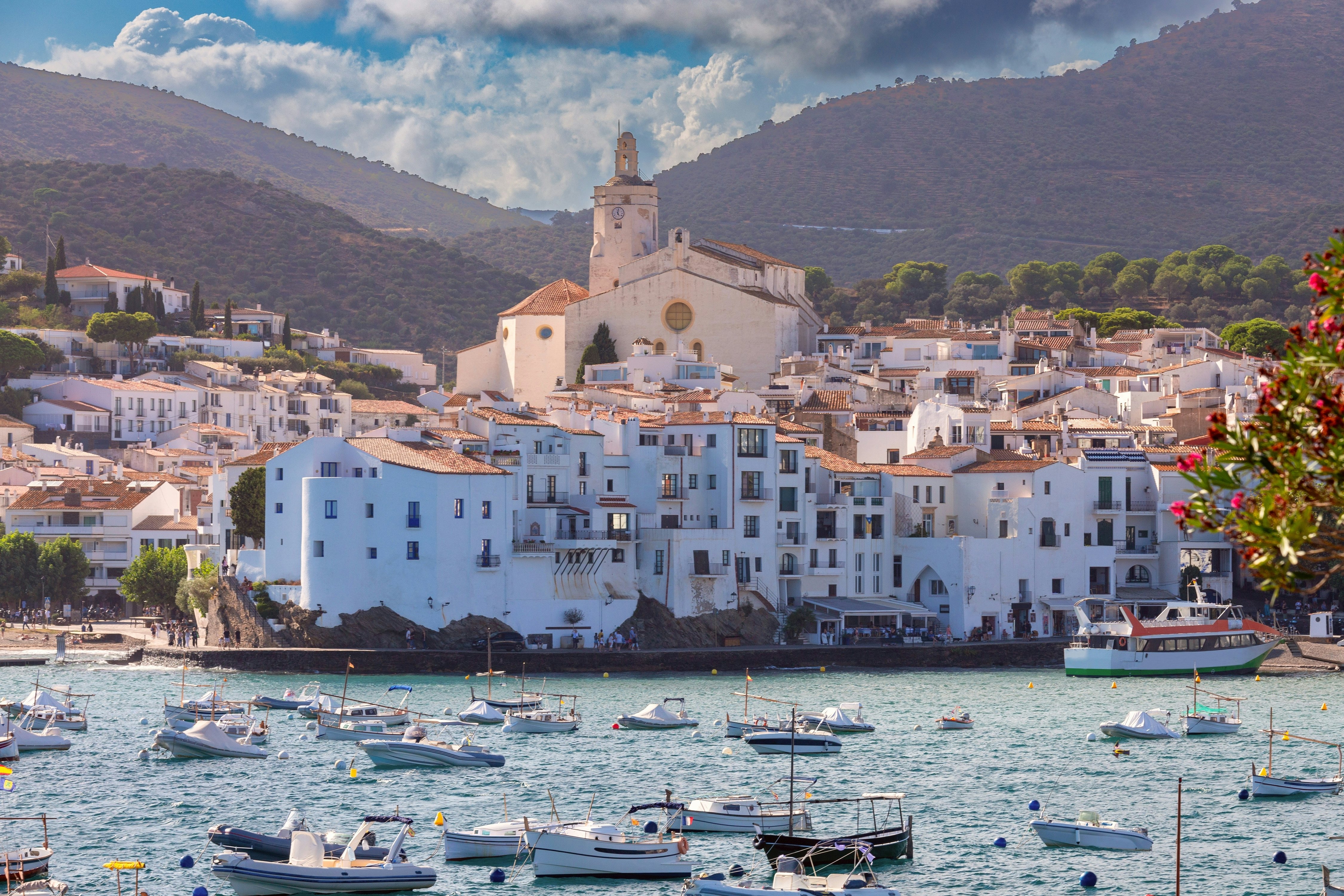
Cadaqués
Best for art lovers
Vibes: Not just Dalí’s town, Cadaqués is a vision in whitewashed walls and bougainvillea trees that give it a sophisticated air in addition to postcard-perfect views.
Do: Visit Casa Salvador Dalí to get a new perspective on the mind of the great surrealist artist from the fisher’s hut he transformed into his beachside villa. Reserve your timeslot in advance or risk missing out.
Eat: From the same team that runs the three-Michelin-starred Disfrutar in Barcelona, you can get the Costa Brava experience at Compartir, where epic multicourse tasting menus are designed for sharing.
Stay: Cadaqués can feel a bit ritzy at times, but you can still find affordable rooms at Hostal Vehí, with a friendly reception and a fantastic location next to the church.
Step 2: Book your accommodation
Summer is high season on the Costa Brava, so you should compare the best options and book your accommodation a few months in advance. Like many beach destinations in Spain, you will find the typical selection of family-friendly resorts and all-inclusives in more commercial destinations, such as Lloret de Mar, Roses and Platja d’Aro. If you’re looking for a more personal touch, however, you might consider a charming boutique hotel or apartment rental in one of the smaller villages. There are budget-friendly options like Hostal Vehí in Cadaqués, as well as more lush choices like the four-star Parador de Aiguablava.
Hostels can be easily found in some of the busier destinations like Tossa de Mar, but campgrounds are also plentiful and they tend to offer a wide variety of accommodations like bungalows and glamping tents, and come with major amenities like pools and sports courts. You can also consider an off-beach stay at a casa rural, a typical vacation home usually in the countryside, which works really well for large groups.
Step 3: Plan your days
The Costa Brava is a destination that is best savored a little bit at a time, especially if you visit in the summer when the call of the sea is bound to be irresistible. However, if you need to make the most of your time, know that the essential sights are in Figueres and Cadaqués for the Salvador Dalí connection and L’Escala and Tossa de Mar for archaeological histories. For divers and snorkelers, the Illes Medes is a must-see protected marine reserve located off the coast of L’Estartit. Tossa de Mar is the quintessential day-trip destination if you are coming from Barcelona, but I recommend staying the night if you go any further north than Sant Feliu de Guíxols, where there is a popular via ferrata.

Step 4: How to get there and around
You can reach Costa Brava by flying into Girona or Barcelona (El Prat) airport. Cities along the Costa Brava are not so well connected by bus, and you'll find most services will route you through Girona. If traveling by train from Barcelona, you can get as far as Girona, Figueres or Portbou, but you'll need to transfer to a bus to get to the seaside.
Once there, the easiest way to get around is by car. However, parking by the beach can be a challenge in the busy summer season, so if you can help it, it’s better to walk or find another way to get around. In the high season, some towns run special bus routes, such as the Julivia bus that connects the towns near Palaufrugell. Moventis (which includes Sarfa) is one of the major bus companies that services the Costa Brava from Barcelona, while Sagalés covers some of the coastal towns of the region. Teisa is another bus service but options are limited. Traveling by bus requires a lot of planning ahead as bus schedules are pretty irregular and connections to some of the smaller towns can be complicated.
With the Camí de Ronda connecting the whole length of the coast, walking is also another favorite way to get around if you’re partial to town-to-town hikes, although I don’t recommend doing this for long distances when summer temperatures are scorching.
Step 5: What to pack
Like Barcelona, the Costa Brava tends to be very humid in the summer. Pack a lot of light shirts, shorts and sundresses. If you plan to visit the calas, consider that you may have to scoot yourself over some rocks to get to the water, so you will need a sturdy swimsuit. Water shoes will also be a huge help for extra grip and protection. Make sure to bring a microfiber towel as well, so you have a clean surface to sit on, and a snorkel mask to enjoy the incredible clarity of the water.









